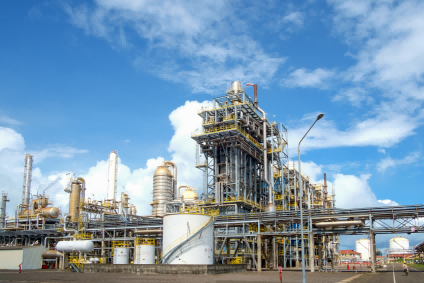
Hydrochloric acid/mud acid corrosion inhibitor: a key protective agent in oil and gas field acidizing operations
1. What is hydrochloric acid/mud acid corrosion inhibitor?
Hydrochloric acid/mud acid corrosion inhibitor is a chemical additive specifically used in oil and gas field acidizing operations, designed to slow down the corrosion of acid on metal equipment. In the process of oil and gas field development, hydrochloric acid and mud acid (a mixture of hydrochloric acid and hydrofluoric acid) are often used in acidizing treatment to increase the production of oil and gas wells. However, these acids are highly corrosive to metal pipes, equipment, etc., which may cause equipment damage, shorten service life, and even cause safety accidents. Corrosion inhibitors form a protective film on the metal surface to prevent acid from contacting the metal, thereby significantly reducing the corrosion rate.
2. Characteristics of hydrochloric acid/mud acid corrosion inhibitors
High-efficiency corrosion inhibition performance: It can form a uniform and complete protective film in an acidic environment, significantly reducing the corrosion rate of the metal.
Good compatibility: It is compatible with other components in the acid (such as additives, impurities, etc.) and does not affect the acidizing effect.
Environmentally friendly: It has little impact on the environment after use and meets environmental protection requirements.
Economical: Low concentration, easy to add, can ensure corrosion inhibition effect while reducing the cost of use.
High temperature resistance: can maintain stable corrosion inhibition effect under high temperature conditions.
3. Classification of hydrochloric acid/mud acid corrosion inhibitors
(I) Proprietary Surfactant Blend
Proprietary Surfactant Blend is a corrosion inhibitor composed of multiple surfactants. Its main mechanism of action is to form a physical barrier by adsorbing on the metal surface to prevent the acid from contacting the metal. This type of corrosion inhibitor usually has good dispersibility and wettability, can be evenly distributed in the acid, and improve the corrosion inhibition effect. Its molecular structure generally contains hydrophilic groups and hydrophobic groups. The hydrophilic groups interact with the acid, while the hydrophobic groups are adsorbed on the metal surface.
The molecular formula of the surfactant mixture is relatively complex because they are usually compounded from multiple surfactants. For example, a common surfactant mixture may contain the following ingredients:
Sodium dodecyl sulfate (C12H25SO4Na)
Dodecanol (C12H26O)
Lauryl alcohol amine (C14H29NO)
These ingredients work synergistically to form a stable protective film, significantly reducing the corrosion rate of the metal.
(II) Oligomeric Ester Quat
Polyester quaternary ammonium is a type of corrosion inhibitor obtained by chemical synthesis, which has good corrosion inhibition performance and stability. Its molecular structure usually contains quaternary ammonium salt groups and polyester segments. The quaternary ammonium salt groups can form chemical bonds with the metal surface to enhance adsorption capacity, while the polyester segments provide good flexibility and high temperature resistance.
For example, the molecular formula of a new type of polyester quaternary ammonium corrosion inhibitor may be:
CnH2n+1N+(CH3)3X−
Where n represents the length of the polyester segment, and X−
represents the counter ion.
Polyester quaternary ammonium corrosion inhibitors show excellent corrosion inhibition effect under high temperature conditions. For example, at 160°C, the corrosion rate of N80 steel is significantly reduced, showing good corrosion inhibition performance.
4. Application of hydrochloric acid/mud acid corrosion inhibitors
(I) Oil and gas field acidification operations
Hydrochloric acid/mud acid corrosion inhibitors are widely used in oil and gas field acidification operations, mainly for protecting metal equipment and pipelines and extending their service life. In practical applications, the amount of corrosion inhibitor added needs to be optimized according to specific acid concentration, temperature, metal material and other factors to ensure the best corrosion inhibition effect.
(II) High temperature environment
Some new corrosion inhibitors (such as polyester quaternary ammonium) can maintain a stable corrosion inhibition effect under high temperature conditions. For example, a new type of polyester quaternary ammonium corrosion inhibitor has a corrosion rate of only 70.25 g/(m²·h) on N80 steel under high temperature conditions of 180°C, which meets the industry standard requirements.
(III) Environmental protection requirements
With the improvement of environmental protection requirements, the environmental friendliness of corrosion inhibitors has become increasingly important. For example, ester-based quaternary ammonium salt corrosion inhibitors have received widespread attention due to their good biodegradability and environmental friendliness.
(IV) Synergistic effect
Some corrosion inhibitors further improve the corrosion inhibition effect by synergizing with other compounds. For example, the synergistic effect of quinoline quaternary ammonium salt and metal cations as hydrochloric acid acidification corrosion inhibitors can significantly improve the corrosion inhibition efficiency.
In short, hydrochloric acid/mud acid corrosion inhibitors play an important role in oil and gas field acidification operations. Their high efficiency, environmental protection and economic characteristics make them a key material to ensure the safe production and efficient operation of oil and gas fields.
Oilfield Chemicals Supplier
UNPChemicals is a professional oilfield chemical manufacturer, with products covering drilling, completion, oil production, gathering and transportation, etc., and has won the trust of customers with advanced technology, strict quality control and high-quality services. We are committed to personalized solutions to help oilfields develop efficiently.